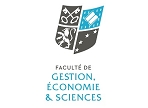Présentation
- Basics skills to read and write a synthesis of a document
- Curiosity to make a research about different marketing examples
- To be able to observe the marketing environments (stores (online/offline) and talk about the details
- Basic skills to use the Microsoft Office programs
At the end of this module, the student will have understood and be able to explain (main concepts). The student will be able to:
- To develop arguments about the basics of marketing
- Understand the different facets of Marketing such as Marketing Mix, Service Marketing, Digital Marketing
- Work on different case studies which will prepare them to be an active professional in marketing projects
- Use the creativity, design thinking and marketing together
- Writing marketing reports and make propositions of new products and services
- Be a good manager with marketing skills
PART 1:
1. THIS IS MARKETING (pages 3-27)
- Definitions of marketing
- What marketing is not
- Before marketing
- Modern marketing
- The marketing function
- Demand and supply
- Exchanges
- Marketing’s changing emphasis
- The rise of consumerism
- The focus themes
2. MARKETING TODAY (pages 29-42)
- Markets
- Market dynamics
- Marketing strategies
- Objectives
- Strategic orientations
- Focusing on customers
PART 2: MARKETING ANALYSIS
3. MARKETING ENVIRONMENT (pages 57-86)
- Use of environmental information
- Situation analysis
- Marketing environment models
- The organizational environment (the internal environment)
- The external environment
- SWOT Analysis
- Stakeholders
4. MARKET SEGMENTATION (pages 91-121)
- Market attractiveness
- Why segment and target markets?
- Segmentation approaches
- Target marketing
- Positioning
- The five-stage process from market segmentation to positioning
5. BUYER BEHAVIOUR (pages 127-154)
- The consumer buyer decision process
- Types of consumer buying decision
- Levels of involvement
- Influences on consumer buyer behaviour
- The consumer buyer decision process for new products
- Types of organization and the products they purchase
- Characteristics of organizational markets
- Organizational buying situations
- The buying centre
- The organizational buying processes
- Organizational purchase criteria
6. MARKETING RESEARCH (pages 159-184)
- Types of marketing research
- Secondary (desk) research
- Primary (field) research
- Two approaches to research: qualitative and quantitative
- Commercially available research
- Quality of marketing information
- Research methods and techniques
- Forecasting and trends
PART 3: MARKETING TOOLS
7. PRODUCT (pages 189-219)
- What is a product?
- The total product (the offering)
- Product types
- Services
- Branding
- Product development
- The product life cycle
- Product portfolio management
8. PROMOTION (pages 227-258)
- Promotion management
- Promotional strategy
- Setting the promotional budget
- The marketing communications process
- Influencing customers (audiences)
- The marketing communications mix
- Advertising
- Public Relations (PR)
- Sales promotion
- Personal selling
- Regulations
9. PLACE (pages 265-286)
- Getting the place right
- Members of the supply chain
- Right space
- Right time
- Differing views of place
- Place management
- Designing the supply chain
- Marketing functions in the supply chain
- E-channels
- Our technological world
10. PRICE (pages 293-319)
- Why it is so important to get the price right
- Pricing viewpoints
- Pricing in the mix
- Pricing objectives
- Pricing methods
- Market-based pricing
- Cost-based pricing
- Target profit pricing
- Foreign currency pricing
- Pricing strategies
- Pricing tactics
- Changing the price
- Price elasticity of demands
11. THE MARKETING MIX (pages 327-345)
- Marketing mix objectives
- The 4Ps
- The 7Ps of service marketing
- Mixing it (blending the marketing mix)
- The product life cycle
- Criticisms
Modalités
The theoretical work should be studied in advance of project work. Students are given documentation at the beginning of the course and throughout. This will enable students to put their creative ideas into practice when working on projects.
Course assignments will include participation in class discussion, writing exercises, brainstorming sessions, a final written work and group presentation.
There will be a blended learning approach to the class: News, video and online writing.
Ressources
Marketing an Introduction by Rosalind Masterson and David Pickton|| <b> </b><i> </i>||






